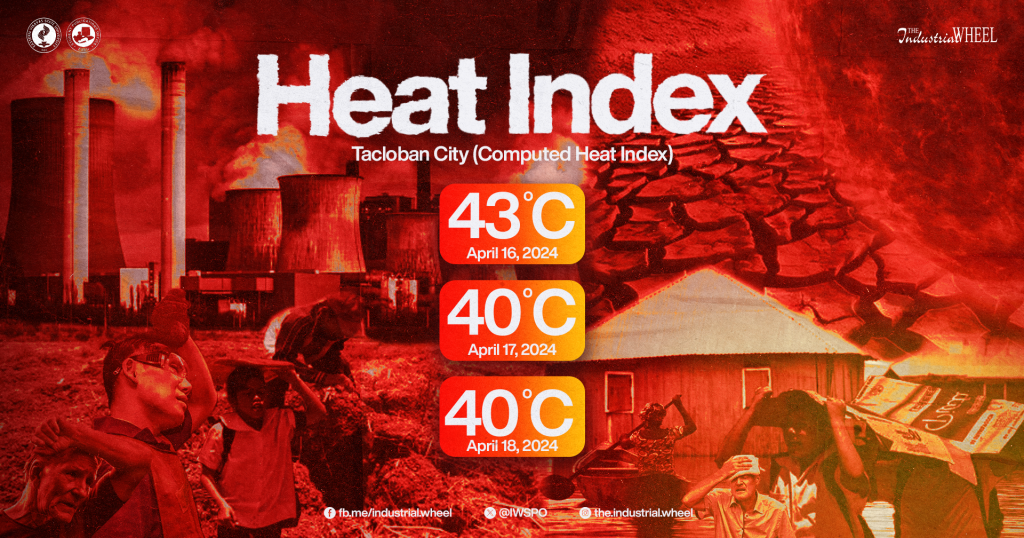
Yesterday, the rise in the heat temperature index has elevated to 47°C in Catarman, Northern Samar and 42°C in Tacloban City, which alarms individuals about the risks of increased blood pressure, stroke, and exhaustion. With records of increased temperatures all over the country, various local offices have announced an offset in-person services and precautionary measures when the heat index—air temperature and humidity—reach ‘dangerous’ zones .
The heat index is the temperature measure of how an individual feels, different from the air temperature, calculated through humidity and air temperature factors.
As the temperature continues to increase, symptoms such as heavy sweating, fatigue, nausea, vomiting, strokes, blood pressure elevation, severe headaches, cramps, and exhaustion will be felt with continued exposure.
According to the Philippine Atmospheric, Geophysical, and Astronomical Services Administration (PAGASA), heat index highs were forecasted to drift between 42°C to 51°C (107.6 to 123.8 degrees Fahrenheit) in 19 areas, including Leyte, Catarman Northern Samar and Guiuan, Eastern Samar, today.
Moreover, PAGASA weather specialist Obet Badrina warned that the heat index in the country may worsen this April, with drought in the Philippines areas potentially lasting until May. The Philippines is highly vulnerable to the impacts of climate change, including more frequent droughts, floods, typhoons, and high temperatures.
Amidst the increasing temperatures, individuals still prefer going on outings while health authorities stress the significance of caution, staying in the shade as prevention, alongside drinking adequate water and taking regular baths. Likewise, they underscored the urgent need for widespread public awareness to prevent further aftermath and protect against any harm brought by this high temperature.
To combat this emerging threat to human life, health experts encourage individuals to remain hydrated as a major defense. PAGASA also encourages the public to limit their time spent outside, avoid soda and tea, especially liquors. Further, always bring an umbrella, hats, and other protective fabrics, and monitor body temperature continuously.
Article by Rustle King Embodo.
